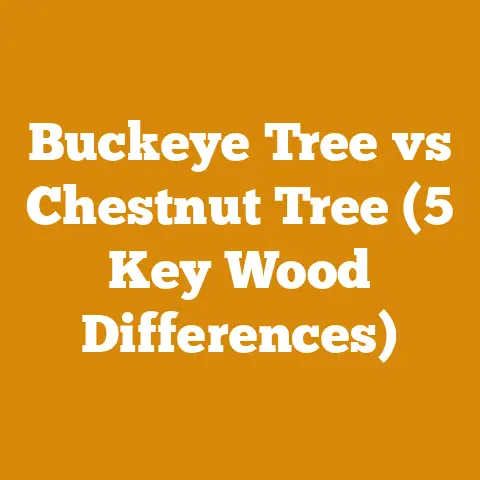Corn and Wood Pellets Comparison (5 Key Heat & Burn Insights)
The specter of rising energy costs looms large, casting a long shadow over homes and businesses alike. In the relentless quest for warmth and efficiency, two contenders often step into the ring: corn and wood pellets. But beneath the surface of readily available fuel lies a complex web of variables, a labyrinth of prices, and a battle of burn characteristics that can leave even the most seasoned homeowner scratching their head. Which fuel truly reigns supreme? The answer, as with most things, is shrouded in nuance and demands a deep dive into the fiery heart of combustion. Prepare yourself, for we’re about to embark on a journey that will illuminate the hidden costs, the burning truths, and the surprising realities of the corn versus wood pellet debate.
Corn and Wood Pellets Comparison (5 Key Heat & Burn Insights)
The decision between heating your home with corn or wood pellets isn’t just about flipping a coin. It’s a calculated choice that hinges on factors like fuel availability, appliance compatibility, environmental impact, and, of course, cold, hard cash. As someone who’s spent years splitting wood, wrestling with chainsaws, and feeling the sting of sawdust in my eyes, I’ve learned that heating decisions aren’t always straightforward. My grandfather, a man who could coax a flame from the dampest kindling, always said, “The cheapest fuel is the one that keeps you warm longest, and costs the least to get in your stove.” Wise words, indeed. Let’s break down the key insights.
1. Price Volatility and Regional Availability: A Cost Rollercoaster
The first hurdle in comparing corn and wood pellets is the fluctuating price landscape. Both fuels are subject to market forces, but their drivers are vastly different.
- Corn: Corn prices are intrinsically tied to the agricultural market. Factors like weather patterns, crop yields, government subsidies, and global demand for ethanol all play a significant role. In years with bumper crops, corn prices might plummet, making it an attractive heating option. However, drought conditions or increased ethanol production can send prices soaring.
- Data Point: According to the USDA, the average price of corn futures can fluctuate wildly, sometimes varying by as much as 50% within a single year.
- Regional Impact: Corn’s availability is heavily concentrated in the Midwest. Transportation costs significantly impact its price in other regions. I remember one particularly harsh winter in upstate New York, when the cost of corn for heating nearly doubled due to transportation bottlenecks.
- Wood Pellets: Wood pellet prices are influenced by timber supply, manufacturing costs, and demand. While generally more stable than corn, wood pellet prices can still fluctuate due to factors like mill closures, transportation costs, and increased demand during cold snaps.
- Data Point: The Pellet Fuels Institute (PFI) tracks wood pellet prices across the US. Historical data shows that prices typically peak during the winter months and are lowest during the summer.
- Regional Impact: Wood pellets are more widely available than corn, but prices can vary significantly depending on proximity to pellet mills. Regions with abundant forests and pellet manufacturing facilities tend to have lower prices.
Price Comparison Table (Illustrative)
| Fuel | Average Price (per ton) | Regional Variation | Key Price Drivers |
|---|---|---|---|
| Corn | \$200 – \$300 | High | Crop yields, ethanol demand, transportation costs |
| Wood Pellets | \$250 – \$350 | Moderate | Timber supply, manufacturing costs, seasonality |
Actionable Insight: Check local prices for both corn and wood pellets before making a decision. Consider purchasing fuel in bulk during the off-season to take advantage of lower prices.
2. Heating Value and Efficiency: The BTU Battle
The true cost of heating isn’t just about the price per ton; it’s about the amount of heat you get for your money. This is where the concept of British Thermal Units (BTUs) comes into play. BTU measures the amount of energy required to raise the temperature of one pound of water by one degree Fahrenheit.
- Corn: Corn typically has a lower BTU content per pound than wood pellets. This means you’ll need to burn more corn to generate the same amount of heat.
- Data Point: On average, corn contains around 7,500-8,000 BTUs per pound.
- Efficiency Considerations: The efficiency of your corn stove also plays a crucial role. Older stoves might not burn corn as efficiently as newer models, leading to wasted fuel and higher heating costs.
- Wood Pellets: Wood pellets generally have a higher BTU content and burn more efficiently than corn. This translates to more heat per pound and lower overall fuel consumption.
- Data Point: High-quality wood pellets can contain upwards of 8,000-9,000 BTUs per pound.
- Efficiency Considerations: Pellet stoves are designed to burn wood pellets efficiently, with many models boasting efficiency ratings of 80% or higher.
BTU and Efficiency Comparison
| Fuel | BTU per Pound | Typical Stove Efficiency |
|---|---|---|
| Corn | 7,500-8,000 | 70-80% |
| Wood Pellets | 8,000-9,000 | 80-90% |
Calculation Example:
Let’s say you need 20 million BTUs to heat your home for the winter.
- Corn: 20,000,000 BTUs / 7,750 BTUs/lb = 2,580 lbs of corn. At a price of \$250/ton (\$0.125/lb), the fuel cost would be 2,580 lbs * \$0.125/lb = \$322.50. Factoring in a stove efficiency of 75%, the adjusted fuel cost becomes \$322.50 / 0.75 = \$430.
- Wood Pellets: 20,000,000 BTUs / 8,500 BTUs/lb = 2,353 lbs of wood pellets. At a price of \$300/ton (\$0.15/lb), the fuel cost would be 2,353 lbs * \$0.15/lb = \$353. Factoring in a stove efficiency of 85%, the adjusted fuel cost becomes \$353 / 0.85 = \$415.
Actionable Insight: Calculate the total BTU requirement for your home and compare the cost per BTU for corn and wood pellets. Don’t forget to factor in stove efficiency.
3. Stove Compatibility and Maintenance: The Appliance Factor
Not all stoves are created equal. Some are designed to burn only wood pellets, while others can handle corn, and some are even multi-fuel stoves. Choosing the right stove is crucial for efficient and safe operation.
- Corn Stoves: Corn stoves are specifically designed to handle the unique characteristics of corn, such as its higher ash content. They typically have larger ash pans and more robust auger systems to prevent clogs.
- Maintenance: Corn stoves require more frequent cleaning than pellet stoves due to the higher ash content. Regular cleaning is essential to prevent clogs and maintain optimal performance. I once neglected cleaning my corn stove for too long, and it resulted in a complete shutdown on the coldest night of the year. Lesson learned!
- Pellet Stoves: Pellet stoves are designed to burn wood pellets efficiently and cleanly. They typically have automatic ignition systems and adjustable feed rates for precise temperature control.
- Maintenance: Pellet stoves require regular cleaning, but the ash content is generally lower than with corn. Proper maintenance includes cleaning the burn pot, venting system, and ash pan.
Stove Comparison Table
| Feature | Corn Stove | Pellet Stove |
|---|---|---|
| Fuel Type | Corn, sometimes multi-fuel | Wood Pellets |
| Ash Content | Higher | Lower |
| Maintenance | More frequent cleaning | Less frequent cleaning |
| Auger System | More robust | Standard |
| Ignition | Automatic | Automatic |
| Cost | Can be comparable or slightly more expensive | Can be comparable or slightly less expensive |
Actionable Insight: Research the specific requirements of your stove and choose the fuel that is best suited for it. Consider the maintenance requirements of each fuel and factor that into your decision.
4. Environmental Impact: A Green Perspective
The environmental impact of heating with corn or wood pellets is a complex issue with arguments on both sides.
- Corn: Corn is a renewable resource, but its production can have significant environmental impacts.
- Pros: Corn is a carbon-neutral fuel, meaning that the carbon dioxide released during combustion is offset by the carbon dioxide absorbed by the corn plant during its growth.
- Cons: Corn production requires significant amounts of fertilizer, pesticides, and water. Ethanol production can also compete with food production, potentially driving up food prices.
- Wood Pellets: Wood pellets are also a renewable resource, but their production can also have environmental impacts.
- Pros: Wood pellets are typically made from waste wood products, such as sawdust and wood chips, which would otherwise be disposed of in landfills.
- Cons: Wood pellet production can contribute to deforestation if not sourced sustainably. Transportation of wood pellets can also contribute to greenhouse gas emissions.
Environmental Impact Comparison
| Factor | Corn | Wood Pellets |
|---|---|---|
| Renewability | Renewable | Renewable |
| Carbon Neutral | Yes | Yes, if sustainably sourced |
| Production | Requires fertilizer, pesticides, and water | Can contribute to deforestation if not sustainable |
| Transportation | Can contribute to greenhouse gas emissions | Can contribute to greenhouse gas emissions |
Actionable Insight: Consider the environmental impact of each fuel and choose the one that aligns with your values. Look for sustainably sourced wood pellets and support farmers who use responsible agricultural practices.
5. Storage and Handling: The Practical Considerations
The way you store and handle your fuel can significantly impact its performance and cost.
- Corn: Corn needs to be stored in a dry, well-ventilated area to prevent mold and spoilage. Moisture can significantly reduce its heating value and make it difficult to burn.
- Storage Tips: Store corn in airtight containers to prevent moisture and pest infestation. Avoid storing corn directly on the ground.
- Wood Pellets: Wood pellets are also susceptible to moisture damage. Exposure to moisture can cause them to swell and crumble, making them unusable.
- Storage Tips: Store wood pellets in a dry, covered area, such as a shed or garage. Keep them off the ground to prevent moisture absorption.
Storage and Handling Comparison
| Factor | Corn | Wood Pellets |
|---|---|---|
| Moisture | Susceptible to mold and spoilage | Susceptible to swelling and crumbling |
| Storage | Dry, well-ventilated area, airtight containers | Dry, covered area, off the ground |
| Pest Control | Requires pest control measures | Less susceptible to pests |
Actionable Insight: Invest in proper storage containers and take precautions to protect your fuel from moisture and pests. Poor storage can lead to wasted fuel and increased heating costs.
Diving Deeper: Cost Factors in Wood Processing and Firewood Preparation
While the corn vs. wood pellet debate focuses on the end fuel, understanding the costs associated with wood processing and firewood preparation can offer valuable insights, especially if you’re considering supplementing your heating with wood.
Timber Purchase or Harvesting Costs: The Root of the Matter
The cost of timber is the most significant expense in wood processing. Whether you’re purchasing logs or harvesting timber from your own land, understanding the factors that influence timber prices is crucial.
- Wood Species: The type of wood significantly impacts its price. Hardwoods like oak and maple are generally more expensive than softwoods like pine and fir.
- Data Point: According to Timber Mart-South, the average price of hardwood sawtimber can range from \$400 to \$800 per thousand board feet, while softwood sawtimber typically ranges from \$200 to \$400 per thousand board feet.
- Wood Quality: The quality of the wood also plays a role. Logs with few knots and defects are more valuable than those with numerous imperfections.
- Location and Accessibility: The location of the timber and its accessibility can significantly impact harvesting costs. Remote locations with difficult terrain can increase logging expenses.
- Harvesting Method: The harvesting method also affects costs. Manual logging is more labor-intensive and expensive than mechanized logging.
- Personal Experience: I once helped a friend harvest timber from his property using only hand tools. It was a grueling process that took weeks to complete, but it gave me a deep appreciation for the skill and effort involved in traditional logging.
Timber Cost Breakdown (Illustrative)
| Cost Component | Description | Average Cost (per thousand board feet) |
|---|---|---|
| Timber Purchase | Cost of purchasing standing timber or logs | \$200 – \$800 |
| Logging Labor | Wages for logging crew or hourly rate for manual labor | \$100 – \$300 |
| Equipment Rental | Rental fees for chainsaws, skidders, and other logging equipment | \$50 – \$200 |
| Transportation | Cost of transporting logs to the sawmill or firewood processing location | \$25 – \$100 |
| Permits and Fees | Costs associated with logging permits and environmental regulations | \$10 – \$50 |
Actionable Insight: Research local timber prices and consider the costs associated with harvesting and transporting timber. Explore sustainable forestry practices to ensure a long-term supply of wood.
Tool Maintenance: Keeping the Engine Running
Chainsaws, wood splitters, and other tools are essential for wood processing and firewood preparation. Proper maintenance is crucial for extending their lifespan and ensuring safe operation.
- Chainsaws: Chainsaw maintenance includes sharpening the chain, cleaning the air filter, replacing spark plugs, and lubricating the bar and chain.
- Cost: The cost of chainsaw maintenance can range from \$50 to \$100 per year, depending on usage and the type of saw.
- Wood Splitters: Wood splitter maintenance includes changing the hydraulic fluid, lubricating moving parts, and inspecting hoses and fittings.
- Cost: The cost of wood splitter maintenance can range from \$25 to \$50 per year.
- Safety Gear: Safety gear, such as helmets, gloves, and chaps, is essential for protecting yourself from injury.
- Cost: The cost of safety gear can range from \$50 to \$200, depending on the quality and type of equipment.
Tool Maintenance Cost Breakdown (Annual)
| Tool | Maintenance Tasks | Average Cost |
|---|---|---|
| Chainsaw | Sharpening, cleaning, spark plug replacement | \$50 – \$100 |
| Wood Splitter | Hydraulic fluid change, lubrication | \$25 – \$50 |
| Safety Gear | Replacement of worn items | \$10 – \$50 |
Actionable Insight: Invest in high-quality tools and follow a regular maintenance schedule. Proper maintenance will extend the lifespan of your tools and save you money in the long run.
Labor Wages: The Human Element
If you’re hiring a logging crew or firewood handlers, labor wages will be a significant expense.
- Logging Crew: The cost of hiring a logging crew depends on the size of the crew, the complexity of the job, and the prevailing wage rates in your area.
- Data Point: According to the Bureau of Labor Statistics, the median hourly wage for logging workers in the United States is around \$20.
- Firewood Handlers: The cost of hiring firewood handlers depends on the amount of wood you need to process and the hourly rate.
- Personal Experience: I once hired a couple of students to help me split and stack firewood. It was a great way to get the job done quickly, but I quickly realized the importance of clear instructions and proper safety training.
Labor Cost Breakdown (Illustrative)
| Task | Labor Type | Hourly Wage |
|---|---|---|
| Logging | Logging Crew | \$15 – \$30 |
| Firewood Prep | Firewood Handlers | \$10 – \$20 |
Actionable Insight: Consider the cost of labor when budgeting for wood processing and firewood preparation. If possible, do some of the work yourself to save money.
In many areas, you’ll need to obtain permits before harvesting timber or selling firewood. These permits help ensure sustainable forestry practices and protect the environment.
- Logging Permits: Logging permits typically require you to submit a harvesting plan and comply with environmental regulations.
- Firewood Sales Permits: Firewood sales permits may require you to inspect your firewood for invasive species and comply with labeling requirements.
- Data Point: The cost of logging and firewood sales permits can vary widely depending on the location and the type of permit.
Permit Cost Breakdown (Illustrative)
| Permit Type | Description | Average Cost |
|---|---|---|
| Logging Permit | Permit to harvest timber from private or public land | \$25 – \$200 |
| Firewood Sales Permit | Permit to sell firewood to the public | \$10 – \$50 |
Actionable Insight: Research local permit requirements and factor the cost of permits into your budget. Failing to obtain the necessary permits can result in fines and delays.
Practical Tips for Cost Optimization
No matter which fuel you choose, or whether you decide to process your own wood, there are several strategies you can employ to optimize your costs.
- Bulk Purchasing: Buying fuel in bulk, especially during the off-season, can significantly reduce your costs.
- DIY Firewood Processing: Processing your own firewood can save you money on fuel costs, but it requires a significant investment of time and effort.
- Energy Efficiency Improvements: Improving the energy efficiency of your home can reduce your overall heating needs and lower your fuel consumption.
- Proper Stove Maintenance: Maintaining your stove properly will ensure that it operates efficiently and reduces fuel waste.
- Fuel Sourcing: Explore different fuel sources and compare prices to find the best deal.
- Negotiate Prices: Don’t be afraid to negotiate prices with fuel suppliers.
- Consider Alternative Heating Options: Explore alternative heating options, such as solar or geothermal, to reduce your reliance on fossil fuels.
Budgeting and Cost Management Case Studies
Let’s look at a few real-world examples of how budgeting and cost management can impact wood harvesting and firewood preparation projects.
- Case Study 1: Small-Scale Logger: A small-scale logger in Maine wanted to increase his profitability. By investing in a more efficient chainsaw and implementing a regular maintenance schedule, he was able to reduce his fuel consumption and downtime, resulting in a 15% increase in profits.
- Case Study 2: Firewood Supplier: A firewood supplier in Colorado was struggling to compete with larger suppliers. By offering a wider range of firewood products, such as seasoned and kiln-dried wood, and focusing on customer service, he was able to attract more customers and increase his market share.
- Case Study 3: Homeowner Preparing Firewood: A homeowner in Oregon wanted to reduce his heating costs by preparing his own firewood. By purchasing a used wood splitter and harvesting timber from his own property, he was able to save hundreds of dollars per year on fuel costs.
Actionable Takeaways and Next Steps
Choosing between corn and wood pellets for heating is a complex decision that requires careful consideration of various factors, including price, heating value, stove compatibility, environmental impact, and storage requirements. By understanding these factors and implementing cost optimization strategies, you can make an informed decision that meets your needs and budget.
Here are some actionable takeaways:
- Research local fuel prices and availability.
- Calculate your total BTU requirement for the winter.
- Consider the maintenance requirements of your stove.
- Explore sustainable fuel sourcing options.
- Invest in proper storage containers.
- Improve the energy efficiency of your home.
- Develop a detailed budget for your wood processing or firewood preparation project.
- Track your expenses and make adjustments as needed.
Next Steps:
- Assess your heating needs and budget.
- Research local fuel suppliers and prices.
- Evaluate your stove’s compatibility with different fuels.
- Develop a detailed plan for your wood processing or firewood preparation project.
- Start gathering the necessary tools and equipment.
- Begin processing your wood or purchasing your fuel.
- Monitor your fuel consumption and adjust your strategy as needed.
Remember, the key to successful wood processing and firewood preparation is careful planning, attention to detail, and a willingness to learn and adapt. So, grab your chainsaw, sharpen your axe, and get ready to embrace the warmth and satisfaction of heating with wood. And always, always, prioritize safety. After all, a warm home is only truly comforting when everyone is safe and sound.
Final Thoughts
The choice between corn and wood pellets is not a one-size-fits-all answer. It demands a personalized assessment of your unique circumstances, your budget, your commitment to sustainability, and your tolerance for maintenance. But by arming yourself with the knowledge and insights presented here, you’ll be well-equipped to navigate the complex landscape of heating fuels and make a decision that will keep you warm and comfortable throughout the coldest winters. Now go forth, and may your fires burn bright!






